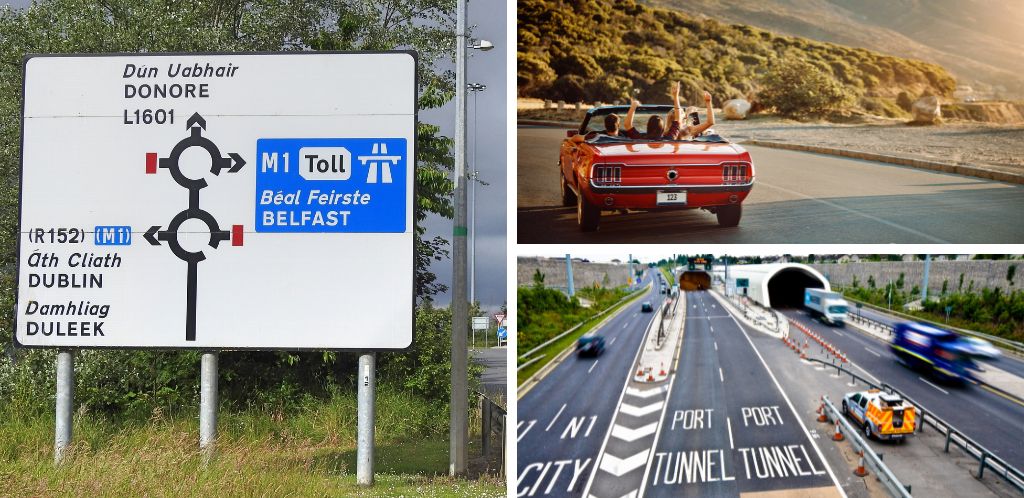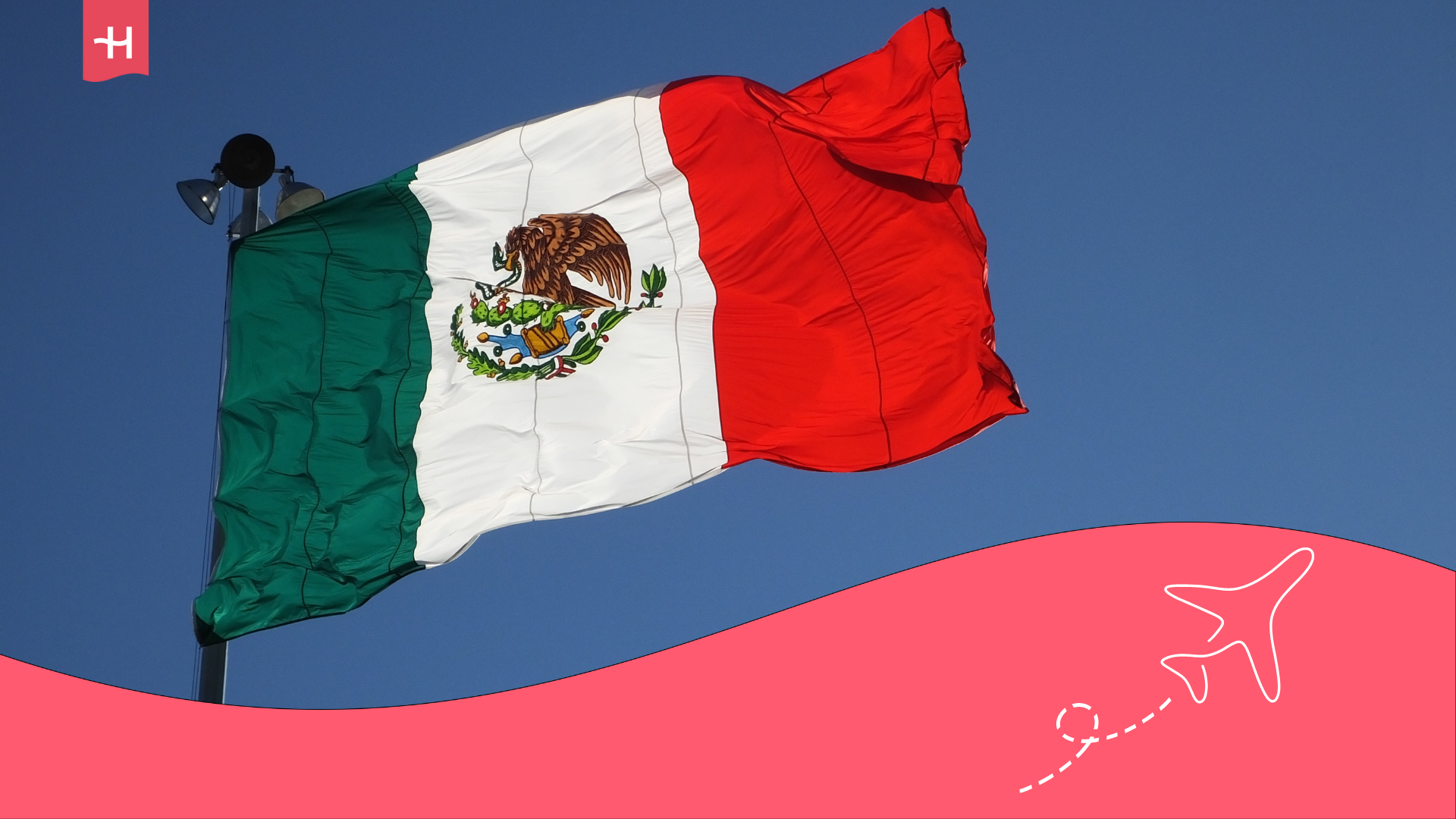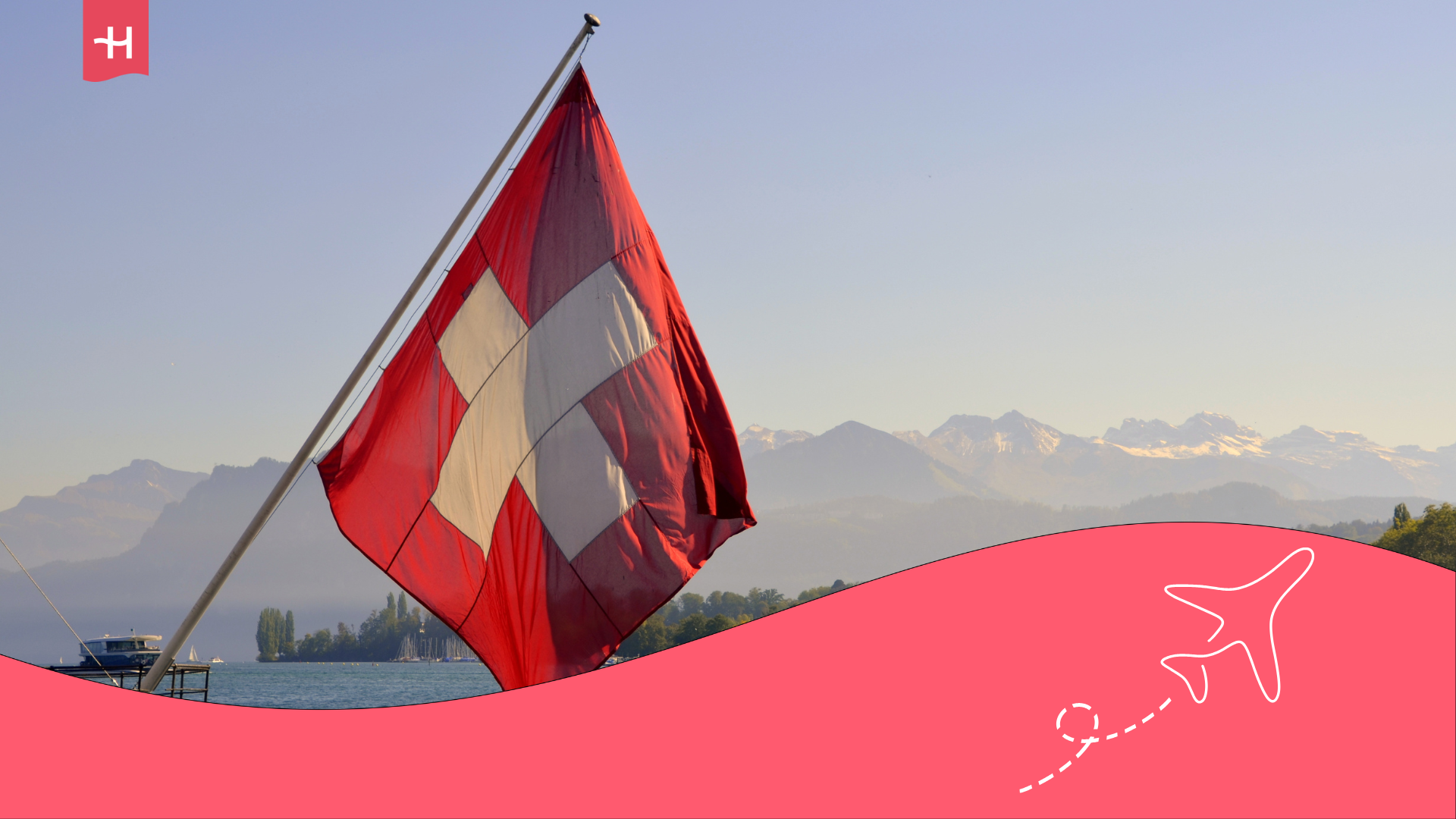Driving in Ireland: Tips and requirements
Driving in Ireland? Before you hit the road, read this guide. We tell you what license you need and what rules to follow.
Want to explore the Emerald Isle at your own pace? Renting a car is a great idea for any trip—it gives you the freedom to discover hidden gems that public transport doesn’t reach and that tour companies often skip. Plus, when you’re surrounded by Ireland’s breathtaking landscapes, you’ll want to stop at every scenic viewpoint and really take it all in. Just keep in mind, though, there are a few important things to know before driving in Ireland.
That’s why we’ve put together a complete guide with everything you need to know before getting behind the wheel. What kind of licenses are accepted? What are the requirements for drivers? Are the road rules the same as in other countries? How do tolls work? We’ve got answers to all those questions, Stick with us and get everything sorted so you’re ready to hit the road as soon as you arrive.
Valid driver’s licenses in Ireland
Let’s start with the first thing you should consider: what kind of driver’s license does Ireland require for foreign visitors? If you don’t have a valid one when you arrive, no rental company will hand over the keys.
There are several types of licenses that are valid for driving in Ireland. The one you’ll need depends on your home country and how long you’re planning to stay. In some cases, your regular license will be enough. In others, you’ll need to get an international driving permit. Let’s break it down in more detail:
1. Licenses from European Union or EEA countries
If your license was issued in Spain, Germany, Italy, or any other EEA country, you’re in luck—you can drive in Ireland without any hassle. No extra forms, no special permits. Just be sure your license hasn’t expired.
Even if you’re planning to stay in Ireland for several months—or even years—you can keep using your license until it expires. You can swap it for an Irish one without having to take a driving test. Why bother, if your current license works just fine? It might come in handy if you ever need to renew it or replace it if lost.
2. International Driver’s License (IDP)
If you’re coming from Mexico, Chile, Colombia, Argentina, the U.S., or any other country outside the EU, you’ll need to get an International Driving Permit (IDP). Just keep in mind—it doesn’t replace your regular license. You’ll need to carry both. Think of the IDP more as a legal translation of your original license.
The procedure to obtain it is very simple, just do it in your country of origin. For example, in Mexico it is issued by the SRE; in the U.S., by the AAA.
3. Exchange of foreign licenses for an Irish license
Planning to study in Ireland or spend an extended stay on the Emerald Isle and want the freedom of having your own car? As we mentioned earlier, if your license was issued in an EU country, you’re all set—there’s no need to switch to an Irish one. But if you’re coming from elsewhere, things work a bit differently.
You can swap your driver’s license for an Irish one, but only if your country has a recognition agreement with Ireland. Such as Japan, South Korea, South Africa, Australia, New Zealand, the UK, Switzerland and Canada (but only certain provinces).
The process is just as straightforward as applying for the IDP. You’ll need to provide your passport, your original license, an official translation if it’s not in English, and pay a fee of 55 euros ($59). Plus, if you’re from one of the countries with an agreement, you won’t need to take any tests.
4. Countries without an agreement: License + IDP and examination
If your country isn’t on the list and you plan to stay for more than 12 months, you’ll need to get an Irish driver’s license from scratch. That means a theory test, driving lessons, and a road test. You can find all the information and complete the process on the official NDLS (National Driver Licence Service) website.
Requirements and documentation for driving in Ireland
In addition to having a valid license, there are a few other requirements you’ll need to meet if you want to drive legally in Ireland. If you’re used to driving in another country, most of these won’t be a surprise—they’re pretty much the same. Still, it’s important to go over them to make sure you’re following the rules. Here are the most important ones:
- Minimum age for driving in Ireland: The legal minimum age to drive in Ireland is 17. However, if you plan on renting a car, most agencies will require you to be at least 21 and have had your license for at least two years. Also, if you’re under 25, there’s a good chance they’ll charge you an additional fee.
- Compulsory insurance: Insurance is mandatory, but it is usually included when you rent a car. In any case, it is a good idea to check which coverages are included.
- Alcohol consumption: While the rules might be a bit more relaxed than in places like Japan, Ireland doesn’t take this issue lightly. The legal limit is 0.5 g/l of blood alcohol for drivers with more than two years of experience. For novice or professional drivers, it’s only 0.2 g/l. Be cautious—driving under the influence not only puts you at risk of causing an accident, but you could also face fines, license suspension, or even jail time.
- Technical inspection of the vehicle: If you’re renting a car, this won’t be an issue. However, if you’re getting your own vehicle, keep in mind that it must have a valid technical inspection. They call it the NCT (National Car Test), and they require it every two years starting from the car’s fourth year.
- Other important considerations: You must make sure that the vehicle is in good condition and has visible license plates. Please note that if you wear glasses and it is on your license, you will have to wear them.
Important: If you are a frequent traveler and want to stay connected without worrying about expensive roaming or looking for a new SIM at every destination, Holafly’s subscription plans are for you. With a single eSIM, enjoy internet in more than 170 countries for a fixed price and no surprises on your bill. travel without limits and connect easily and securely! 🚀🌍

Irish traffic regulations and signage
Now that you know the requirements for driving in Ireland, let’s talk about how things work on the road. Like any country, Ireland has its own traffic rules, and it’s important to follow them closely. While they’re pretty similar to what you’d find in other places, it’s worth going over them to make sure you’re prepared. Some of the rules might surprise you if you’re not familiar with them beforehand.
- Direction of traffic: First things first, in Ireland, they drive on the left. That’ll be the first thing you notice. If you’re not used to it, take it slow and give yourself time to adjust. Be especially careful when turning or entering roundabouts.
- Speed limits: Generally, 50 km/h in urban areas. On secondary roads, 80 km/h. On national roads 100 km/h and 120 km/h on freeways.
- Use of the cell phone: Driving with a cell phone is forbidden, except with a hands-free phone. The fine can reach 120 euros ($129) and, in addition, you will lose points.
- Seat belts: Mandatory for all passengers in the vehicle.
- Lights: It is recommended to turn on the lights during the day, especially if there is bad weather or low visibility.
- Signage: In the Republic of Ireland, they measure distances and speed limits in kilometers. However, in Northern Ireland, they use miles. Also, be aware that many warning signs are diamond-shaped with a yellow background, which is different from what you might be used to in other countries.
- Fines and common violations: Exceeding the speed limit can cost you up to 1,000 euros ($1,079). Driving under the influence of alcohol can result in fines of up to 5,000 euros ($5,395), jail time, or a license suspension.
Tolls and refueling in Ireland
Alright, that covers the most important things to keep in mind before getting behind the wheel. Now, let’s move on to some more practical matters.
Two things you’ll need to deal with as soon as you start driving are fuel and tolls. Knowing how both work will help you plan your trip better, so let’s go over what you should keep in mind.
1. How do tolls work in Ireland
Ireland’s toll highway system is pretty straightforward. There are 11 toll sections in total, most of which are around Dublin or on routes leading to major cities like Cork, Galway, or Limerick.
How much will they cost? Depending on the section and the type of vehicle. For standard cars (category 1), the rate is around 1.40-2.90 euros ($1.50-3.10).
The way you pay varies. For example, the M50 Toll (Dublin’s ring road) is one of the most well-known and doesn’t have any physical booths. Instead, you’ll need to pay online or at authorized shops before 8:00 PM the next day. For the other tolls, you can pay directly at the booths with cash, a card, or an electronic device.
2. Refueling in Ireland
You won’t have any trouble finding gas stations anywhere in Ireland, even in rural areas. Most are self-service, and some only have staff during business hours
The main fuels you’ll find are unleaded petrol and diesel. Some stations also offer LPG, but it’s less common.
As of today, March 2025, the average price per liter is:
- Gasoline: 1.70-1.75 euros ($1.82-1.88)
- Diesel: 1.65-1.70 euros ($1.77-1.82)

Parking in Ireland
One more thing to consider is parking. You can’t park just anywhere, so be mindful of the rules. Fines can be hefty, especially in bigger cities like Dublin or Cork.
While you’ll find free parking areas (mainly in the outskirts of the cities), most places require you to pay. Parking is usually regulated by time slots, with prices varying depending on the area. In Dublin, for example, you could pay up to 4.00 euros ($4.35) per hour in central areas, while cheaper spots can be as low as 0.90 euros ($0.98).
There are several ways to pay. You can use coins at the parking meters or mobile apps like Parking Tag or Park by Text. Just keep in mind that not all areas accept the same methods, so be sure to check the signs.
When it comes to parking, there are some street markings with which you should be familiar:
- A single yellow line: No parking at certain times.
- Two yellow lines: No parking at all times.
- Cycle lanes, loading bays and pedestrian zones: Don’t even try.
There are also many private parking lots with flat rates. They are very practical if you plan to stay for several hours. Prices? On average, between 7 and 10 euros ($7.60-10.80) per day.
Options for renting a car in Ireland
We’re almost all set for you to hit the road as soon as you land. What’s left? The vehicle. You won’t have trouble finding a rental agency—they’re available at the airport, train stations, and in the city center, for example. All of them have a wide range of vehicles, so you can choose the model you want.
For short trips or city driving, compact cars are a great choice. They’re easy to park and fuel-efficient. You can rent them for as little as 28 euros ($30) per day, or between 210–300 euros ($225–320) per week.
If you’re planning to explore as much of the country as possible and do a lot of driving, an SUV or a family car might be a better fit. They’re also more spacious if you’re traveling with a group. You can rent one for between 300–450 euros ($320–480) per week.
Staying for an extended period? Some agencies, like Budget or GoCar, offer monthly rates. Depending on the type of car, you can expect to pay between 850 and 1,200 euros ($910–1,290) per month.
Tips for driving in Ireland as a foreigner
And so far the most basic things you should take into account to start driving in Ireland. To finish, some last tips that will be useful for you to know.
- Learn to read your surroundings: In rural areas, signs can be hard to come by. You’ll often need to rely on your GPS or just go with your gut. If you find yourself on a single-lane road with another car coming towards you, don’t worry—there are usually places to pull over every few meters.
- Avoid rush hour in the city: In Dublin, Cork, or Galway, rush hours can be a nightmare. If you can, try to schedule your trips outside of peak hours (between 8 and 10 AM, and 4:30 to 6:30 PM).
- Don’t rely on the weather when going out: The weather in Ireland can change quickly. Even if it’s sunny, make sure your windshield wipers are working properly. Visibility can drop dramatically when it rains heavily.
- Carry loose change or activate parking apps: Although many areas already allow you to pay with apps, there are still some older parking meters that only accept coins.
- If you come across a tractor, breathe: This is pretty common, especially in the summer and in small towns. Don’t honk your horn or try to overtake without visibility. Slow down and wait for the right moment. It’s all part of the experience!
- Keep calm at roundabouts: You’ll find a lot of them, and some might have multiple exits that aren’t clearly marked. Got confused? No worries, just keep going until you’re sure and take the exit when you’re ready.
Frequently asked questions about driving in Ireland
It depends. If you have a license from an EU or EEA country, you can drive without any issues. If you’re from outside the EU, you’ll need an international driving permit (IDP) along with your original license. For long stays, you might have to exchange your license for an Irish one.
It depends on the model and how long you need it. You can rent a compact car from 28 euros ($30) per day. For longer trips, weekly rates range from 210 to 300 euros ($225–320). SUVs or family cars start at 300 euros ($320) per week.
You pay some tolls at booths with cash or card. Others, like the M50 in Dublin, don’t have barriers. You’ll need to pay online or at authorized stores before 8:00 PM the following day. The tolls range from 1.40 to 2.90 euros ($1.50–3.10), depending on the route and the vehicle.
In cities, they usually regulate parking by time limits. You can pay with coins or apps like Parking Tag. Prices range from 0.90 to 4.00 euros ($0.98–4.35) per hour, depending on the area. There are also private parking lots with flat daily rates.





 Language
Language 


















 No results found
No results found







